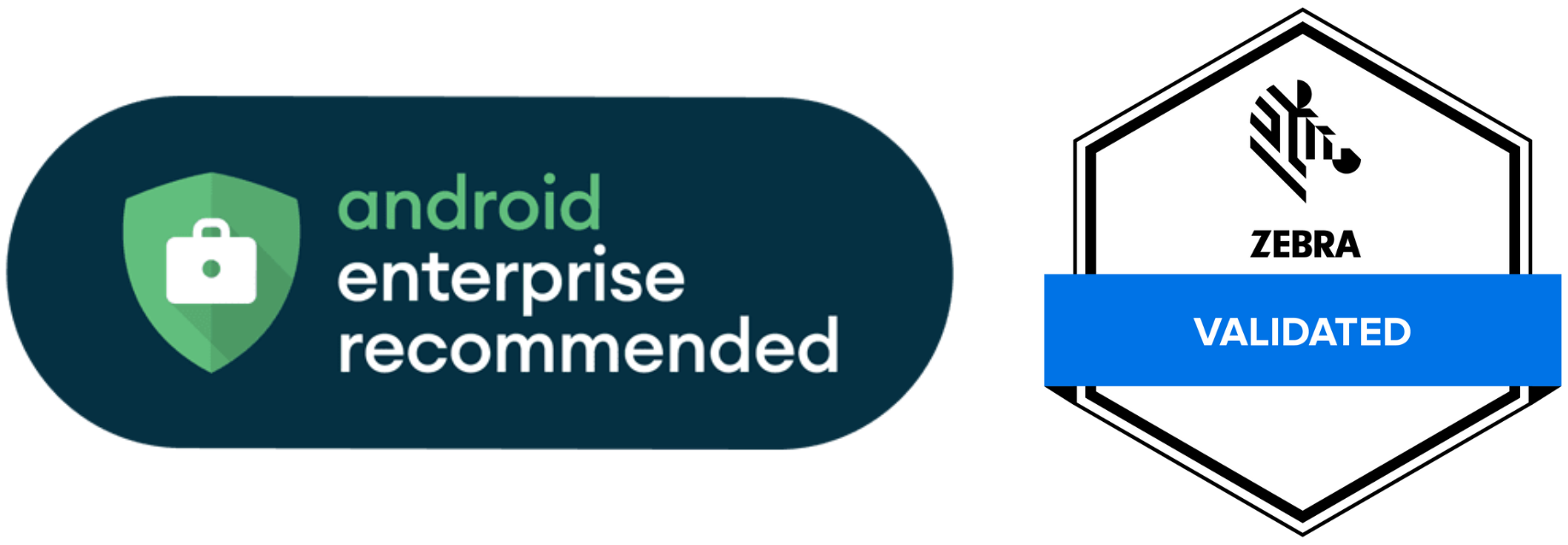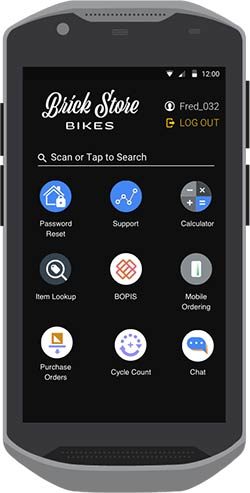Zebra Device Tracker and Finder
Device Finder
Built-in configuration tools to find missing workforce devices using network access points, GPS or bluetooth; map devices on or off location; dispatch audible alerts to device location
Check-in/out events and battery alerts
See which users currently have what device and when they last used them to maintain device accountability; alerts as battery thresholds are met to keep devices from going missing.
Detailed login and usage data can be fed into any backend data services to support end-to-end visibility of device usage.
Alleviate device loss & missing device costs
Tracking lost devices, maintaining device accountability in a shared environment, and visibility of devices help to alleviate the high yearly cost of missing devices.
Enterprise Launcher with role-based permissions
BlueFletch sets up the display of the device; when employees sign in on a shared Zebra workforce gadget, they immediately access applications linked with their user role or authorization level.
Single sign-on (SSO) for Zebra devices
With single sign-on (SSO) enabled, say goodbye to repetitive logins for all types of applications - mobile, web, legacy, and third-party, on your Zebra handheld devices.
Rapid login (less than 5 seconds)
Authenticate directly with major Identity Providers (like Okta, OneLogin, Azure AD); BlueFletch Launcher provides a fast and frictionless login experience.
Passwordless re-authentication
Workers can quickly re-authenticate their session on their Zebra workforce devices using utilizing cutting-edge features like Nearfield Communication Badges (NFC), Facial Recognition, Fingerprint, FIDO2 Key, Barcode, and PIN to instantly access devices and apps instead of re-entering passwords.

Device and user-level security control
Display applications to users based on their role and restrict access to settings and other applications.
Configurable logout events
Logout can be triggered based on custom events such as device cradled, no detected motion, and timer per role.
Clear cached data upon logout
Clear running apps, destroy session tokens, and remove cookies upon logout of the Zebra device so the device is clean and ready for the next user.
Every shift change spent wrestling with multiple logins and device handoffs is eroding your operational efficiency, workforce productivity, and security compliance.
BlueFletch transforms WS50 authentication with the seamless access, granular control, and enterprise scalability your frontline operations demand. Beyond basic SSO, we deliver a complete authentication ecosystem that grows with your business.
Let us show you how leading enterprises are revolutionizing their device security without compromising operational speed.

What customers say about us
Why workforce device tracking?
Device tracking and accountability for mobile workforce devices offer numerous advantages for businesses in today’s fast-paced and ever-changing environment. It has become crucial for organizations to have effective systems in place to ensure the security and productivity of their mobile workforce.
Key benefits of device tracking and accountability
Enhanced security
First and foremost, device tracking provides enhanced security. Mobile devices like Zebra devices often contain sensitive company data, and the loss or theft of these devices can have severe financial and reputational consequences.
By implementing tracking technology, businesses can remotely locate and disable lost or stolen devices, preventing unauthorized access and reducing the risk of data breaches.
Deterrent against theft
Additionally, device tracking acts as a deterrent against theft. When employees are aware that their devices are being tracked, they are more likely to take better care of them and be cautious with their usage.
This helps to minimize the chances of devices being misplaced, lost, or stolen, ultimately saving the organization both time and money.
Increase productivity
Another significant advantage is the increase in productivity. Device tracking allows businesses to monitor the usage patterns and activities of their mobile workforce. This information can be leveraged to identify bottlenecks, streamline processes, and improve overall efficiency.
With real-time data on employee whereabouts, organizations can allocate tasks, manage workloads effectively, and ensure optimal resource utilization.
Geolocation tracking, a feature of device tracking, provides valuable insights into the movement and activities of mobile workers. This information can be used to optimize routing and scheduling, ensuring that field personnel reach their destinations efficiently.
Maintain compliance
For businesses operating in regulated industries, device tracking is crucial for maintaining compliance. It provides an audit trail of device usage and data access, which proves invaluable during audits or investigations.
With this information readily available, organizations can demonstrate their adherence to relevant regulations.
Cost optimization
Device tracking and accountability contribute to cost optimization in several ways. By reducing device loss and theft, businesses avoid expenses associated with device replacement, data recovery, and potential legal consequences.
Improved productivity and efficient resource allocation lead to overall cost savings for the organization.
Improve safety
Last but not least, device tracking improves employee safety, particularly for industries involving remote or hazardous work environments. By monitoring the location and activities of field workers, businesses can respond promptly in emergencies or incidents.
This enables rapid assistance, potentially saving lives and minimizing the impact of accidents.
Experience the Difference of BlueFletch
BlueFletch Enterprise is a powerful toolset for device login and single sign-on (SSO), user/device compliance and management, device tracking, and enhancing worker experience supporting a variety of industries.


